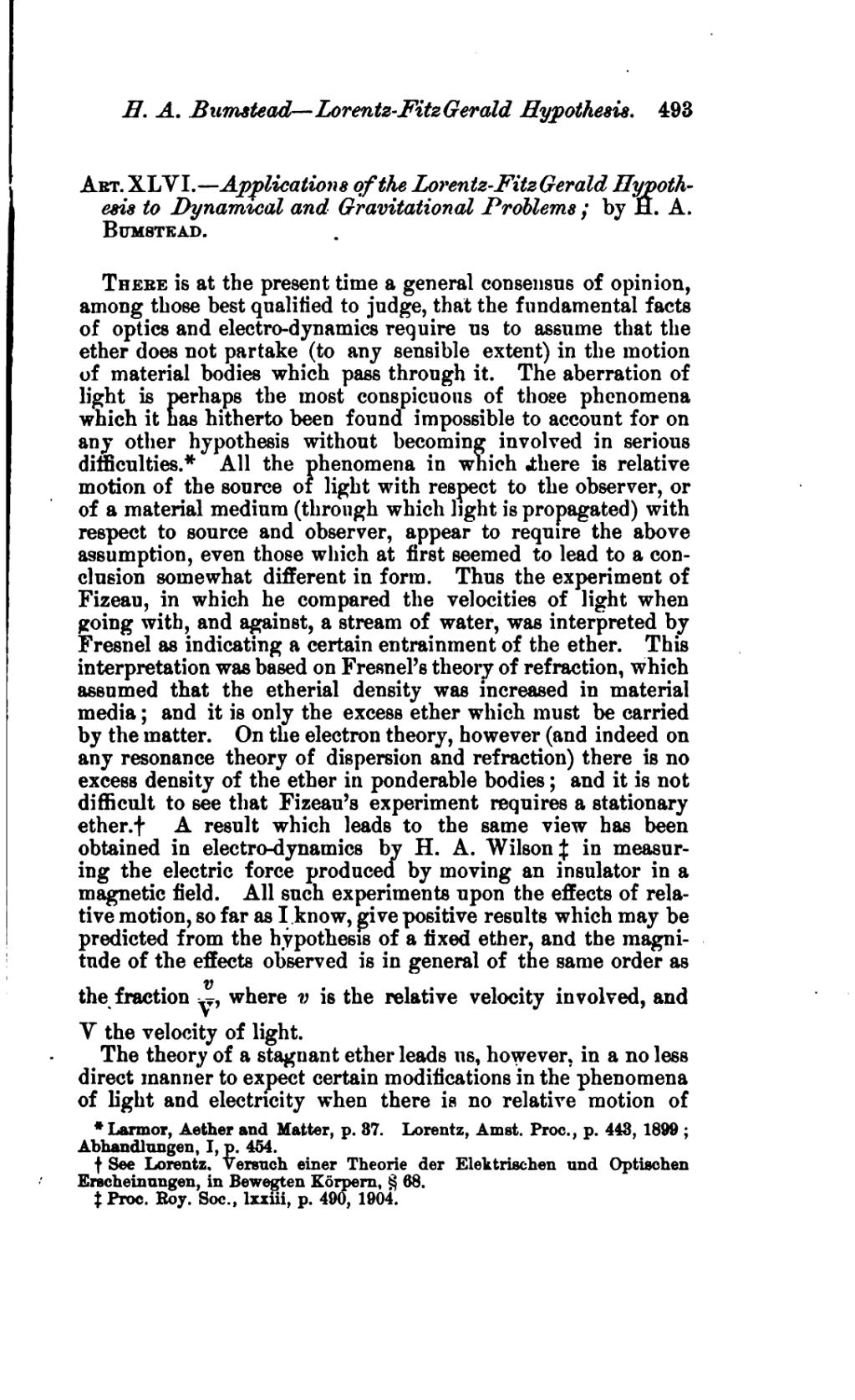Art. XLVI.—Applications of the Lorentz-FitzGerald Hypothesis to Dynamical and Gravitational Problems; by H. A. Bumstead.
There is at the present time a general consensus of opinion, among those best qualified to judge, that the fundamental facts of optics and electro-dynamics require us to assume that the ether does not partake (to any sensible extent) in the motion of material bodies which pass through it. The aberration of light is perhaps the most conspicuous of those phenomena which it has hitherto been found impossible to account for on any other hypothesis without becoming involved in serious difficulties.[1] All the phenomena in which there is relative motion of the source of light with respect to the observer, or of a material medium (through which light is propagated) with respect to source and observer, appear to require the above assumption, even those which at first seemed to lead to a conclusion somewhat different in form. Thus the experiment of Fizeau, in which he compared the velocities of light when going with, and against, a stream of water, was interpreted by Fresnel as indicating a certain entrainment of the ether. This interpretation was based on Fresnel's theory of refraction, which assumed that the etherial density was increased in material media; and it is only the excess ether which must be carried by the matter. On the electron theory, however (and indeed on any resonance theory of dispersion and refraction) there is no excess density of the ether in ponderable bodies; and it is not difficult to see that Fizeau's experiment requires a stationary ether.[2] A result which leads to the same view has been obtained in electro-dynamics by H. A. Wilson[3] in measuring the electric force produced by moving an insulator in a magnetic field. All such experiments upon the effects of relative motion, so far as I know, give positive results which may be predicted from the hypothesis of a fixed ether, and the magnitude of the effects observed is in general of the same order as the fraction , where is the relative velocity involved, and the velocity of light.
The theory of a stagnant ether leads us, however, in a no less direct manner to expect certain modifications in the phenomena of light and electricity when there in no relative motion of
- ↑ Larmor, Aether and Matter, p. 37. Lorentz, Amst. Proc., p. 443, 1899; Abhandlungen, I, p. 454.
- ↑ See Lorentz. Versuch einer Theorie der Elektrischen und Optischen Erscheinungen in Bewegten Körpern, § 68.
- ↑ Proc. Roy. Soc., lxxiii, p. 490, 1904.



